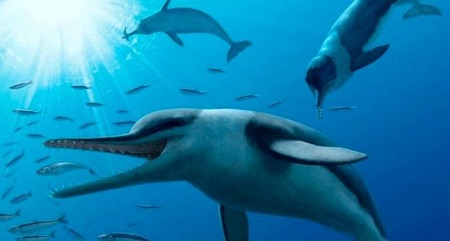All living toothed whales rely upon echoes of their own calls to navigate and hunt underwater, a skill that works best in conjunction with high-frequency hearing. Now, researchers studied one of the best-preserved ears of any ancient whale ever discovered find that whales’ high-frequency hearing abilities arose earlier than anticipated.
“Our study suggests that high-frequency hearing may have preceded the emergence of echolocation,” says Morgan Churchill.
Churchill and his colleagues made their discovery in studies of a new fossil whale species (Echovenator sandersi) found in a drainage ditch. The researchers CT scanned the ancient whale’s remarkably complete fossilized ear and compared it to those of two hippos and 23 fossil and living whales. Those analyses uncovered many features found today in dolphins, which can hear at ultrasonic frequencies.
The anatomy of Echovenator’s ear suggests that high-frequency hearing evolved early in whale evolution, about 27 million years ago and that traits associated with this ability actually predate the emergence of toothed whales. It also suggests that the evolutionary ancestors of toothed whales could hear at higher frequencies than their relatives on land.
Churchill says that the inner ear of Echovenator is surprisingly similar to that of modern whales. In fact, only one trait of the ancient whale’s ear was more similar to primitive whales than to modern whales, suggesting a very rapid evolution of hearing abilities in early whales.
Echovenator is remarkable in other ways too, Churchill notes. For instance, the ancient whale was remarkably small compared to its ancestors, suggesting a drastic change in body size early in toothed whale evolution that most likely influenced a range of variables, from brain size to ecology.
Echovenator is just one of many fossil whales. Those fossils represent some of the earliest known ancestors of toothed whales. And that means there’s much more to come on the evolution of intelligence, body size, foraging ecology, and diversity in modern whales.
Source: Science daily
N.H.Kh

